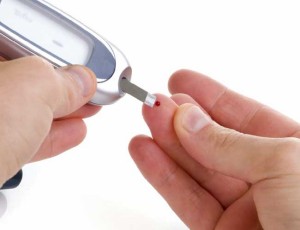Diabetes mellitus is a metabolic disease characterized by high blood sugar levels. A person who has diabetes is unable to effectively regulate blood sugar, either because the pancreas (the gland that normally produces insulin) does not produce enough insulin or because the cells do not respond properly to available insulin.
People who have diabetes would normally be put on a medication and diet regimen to effectively control blood sugar levels. For most diabetics, blood sugar levels can be controlled through a combination of medication, diet and exercise. However, ineffective management of blood sugar levels can cause either hyperglycemia (very high blood sugar level) or hypoglycemia (very low blood sugar level). These acute conditions, also known as diabetes emergencies, can be dangerous if not treated immediately.

Diabetes Emergencies
If a diagnosed diabetic presents the symptoms listed below, be sure to provide immediate first aid (find the right course here). For all diabetes emergencies, contact the person’s healthcare provider or a local doctor. If it is not possible, or the condition worsens, take the person to the hospital.
Hypoglycemia
- Symptoms
o Hunger
o Weakness, drowsiness
o Feeling faint or dizzy
o Rapid shallow breathing
o Abnormally fast pulse
o Headache, shaking
o Paleness of skin
o Cold, sweaty skin
o Numbness of hands and/or feet
o Odorless breath
- First Aid
o If the person is unconscious, open the airway and monitor breathing. Be ready to provide resuscitation if needed.
o If the person is fully conscious, assist him in an upright position (sitting or lying down with upper body raised). Encourage the victim to take in easy-to-digest foods with high sugar, such as sweet drinks, juice or chocolate, to restore blood sugar levels. If this improves the person’s condition, give more.
o If the condition worsens or deteriorates, call for emergency medical assistance or bring the person to the emergency department.
o Stay with the person until he recovers completely.
Hyperglycemia
- Symptoms
o Rapid, weak pulse
o Deep breaths or sighing
o Confusion
o Dry, warm, flushed skin
o Dizziness or unsteady gait
o Breath or skin smells sweet apple or nail polish (acetone)
o Drowsiness progressing to gradual loss of consciousness
- First Aid
o At the onset of symptoms, contact the person’s healthcare provider or local doctor for instruction. Some diabetics have an emergency, insulin-dose that must be given immediately to control rising blood sugar.
o If the person is unconscious, open the airway and monitor breathing. Be ready to provide resuscitation if needed.
o If the condition worsens or deteriorates, call for emergency medical assistance or bring the person to the emergency department.
Important: Hyperglycemia can occur in persons who have not been diagnosed with diabetes. Usually, the progression of symptoms is gradual; taking several days, before the person gradually deteriorates. But it can also happen in a sudden.
Very high or very low blood sugar levels can cause serious effects on a person’s brain. Prompt recognition and treatment can be potentially lifesaving.
